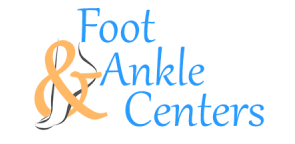Understanding & Avoiding Ingrown Toenails
The painful ache you're experiencing in your big toe around the nail is worsening, likely due to ingrown toenails. It started out as just slightly annoying, but now it hurts to wear your shoes and walk. You may have realized that the pain is coming from one of your toes, more specifically, the toenail.
Perhaps you’ve noticed some redness or swelling around the toe, and maybe you even have some drainage from around your nail. Ingrown nails can range from simple irritation to a serious issue that poses additional health risks.
What is an ingrown toenail?
It occurs when the edge of the nail begins to grow into the soft skin of the toe. Initially, it may simply be painful and irritating. When left untreated, it can become infected.
Once a bacterial infection sets in, the area around the nail may swell, redden, and become filled with pus, which may or may not drain on its own. Bacterial infections around ingrown toenails are common. It's crucial to promptly seek examination and treatment from a podiatrist.
Without proper treatment, the bacteria can move beyond the toe and the area around the nail and enter the bloodstream.
Ingrown toenails may cause serious complications
Because of their high likelihood of infection, it may actually pose serious complications for some patients. Those who have joint replacements, pacemakers, or diabetes are at especially high risk for complications and further illness. It can occur as a result of bacteria moving beyond the nail and into the bloodstream.
Artificial joints or implants can lead to infections. Diabetics face challenges in managing blood sugar and overall health.
What causes ingrown toenails?
Improper trimming
An ingrown toenail can happen due to various reasons. However, the most common cause is trimming nails too short or rounding the corners excessively.
Socks and shoes that are too small
Another common cause is wearing socks or shoes that are too tight around the toes. Short shoes or socks can force toes to press against the front, causing discomfort.
Picking at or tearing toenails
Picking at the nails and tearing off the edges is a common cause of ingrown toenails, increasing the risk of development. Tearing off the nail edge unevenly can lead to deeper tears towards the nail bed, increasing the risk of injury.
Injuries
Injuries to the toe or the toenail may also cause ingrown nails. The most common types of injuries that cause ingrown nails include stubbing the toe and dropping objects on it. Repetitive actions, like kicking during soccer, can also contribute. Activities like running or hiking, which cause feet to swell or slide forward, can further exacerbate the problem.
Other ingrown toenail causes
Other causes include heredity and fungal infections. For some unfortunate people, ingrown nails appear to have no obvious cause.
Ingrown nails, diabetes, & circulation disorders
In those with diabetes or circulation disorders, ingrown nails may quickly progress from minor irritations to serious conditions with complications such as gangrene or bacterial infections.
Treating ingrown toenail when home care fails
If, despite proper care, the ingrown toenail persists, consult a podiatrist for expert guidance on addressing the issue effectively.
Seek podiatrist care promptly for ingrown nails, especially if you have diabetes or any cardiovascular disorder, to avoid complications. Your podiatrist will assess the toe for severity, infection signs, and recommend the appropriate treatment based on their evaluation.
Treatment for ingrown toenail involves numbing the toe with a local anesthetic followed by removing the edge of the nail. Based on severity and infection status, treatments may include destroying the nail root or administering medications to promote healthy growth.
Healthy patients usually don’t need pain meds post-anesthesia, but antibiotics may be prescribed if infection signs emerge.
What happens after an ingrown toenail is treated?
Most patients have very few restrictions on their activity or footwear after the treatment of ingrown nails.
Sports participants can typically resume activities unrestrictedly the following day after treatment. However, proper toenail care and well-fitting footwear are crucial to prevent recurring ingrown nails, minimizing the risk of future occurrences.
How to prevent ingrown toenails?
There are some factors that simply can’t be avoided, such as hereditary tendencies towards ingrown nails. If your parents suffered from them, you may as well. However, several other factors, when addressed properly, may help prevent it.
Wear properly fitting socks and shoes.
Avoid overly loose shoes — they can cause your feet to slide forward, leading to toe pressure against the shoe's front. This is especially noticeable when walking or running.
Take care in trimming your toenails.
When trimming your toenails, cut straight across and avoid rounding the nail. Ideally, you should leave enough of an edge that you can slide a fingernail between the nail and the toe.
Be cautious not to over-trim your toenails, as this is a common cause of ingrown toenails. Excessive trimming can exacerbate the issue.
In addition, avoid cutting a notch in the nail. Once believed to relieve pressure, cutting nails too short actually encourages downward growth, raising the risk of ingrown nails.
Final Thoughts
Seek help from a podiatrist. Even if you are wearing properly-fitting socks and shoes and practice proper nail care, you may not be immune to ingrown nails. It is important to seek help from a podiatrist at the first sign of ingrown toenails rather than simply trying to treat it on your own.
Self-treatment increases infection risk and recurrence rates for ingrown nails compared to seeking podiatric assistance for proper care.
If you've been enduring painful toes and toenails, consider seeking care at Foot & Ankle Centers for expert assistance. Call us today to schedule an appointment with one of our podiatrists. We look forward to helping you keep your feet healthy and happy for years to come.


